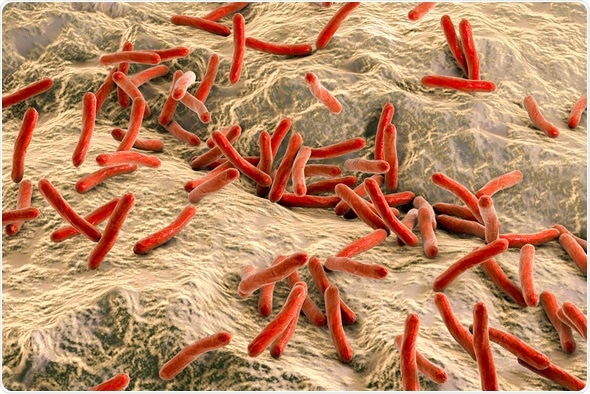Leprosy is a chronic infectious disease caused by the bacillus Mycobacterium leprae. While the organism is readily transmitted from person to person, it does not usually produce the clinical disease because of intrinsic human resistance to the infectious agent in the majority of people.
The disease affects mostly the skin and peripheral nerves. Its spectrum of manifestations varies from tuberculoid to lepromatous, depending on the cellular immune status of the patient.
Diagnosis is based on the clinical features, along with the lepromin test to determine the type of disease. Early detection, prompt and adequate treatment, and rehabilitation of any residual deformities, are all essential components of the management of leprosy and to ensure the patient is reintegrated into society fully.
The disfigurement and disability associated with this condition, with the absence of any effective treatment, are largely responsible for the fear and deep revulsion this condition has caused through most of human history.

Epidemiology
The highest rates of leprosy are in tropical countries, especially in Asia and Africa. Underdeveloped nations are at the greatest risk and, even today, 105 countries qualify as endemic for the disease. These countries are mostly in Southeast Asia, North and South America, Africa, and the eastern seaboard of the Pacific Ocean and the Western Mediterranean coast. India alone accounts for 64 percent of all new cases in the world.
The current prevalence of leprosy is approximately 0.34 per 10,000.
Over 200 000 new cases of leprosy have been reported annually in recent years. The primary source is lepromatous patients who are not being treated. The microbe persists in fomites and other sources outside the patient’s body when conditions are right however, most people in endemic areas have developed resistance to the mycobacterium.
The highest number of cases in the world is still found in India, with Brazil ranking second. The most useful indicators used in epidemiology include the new case detection rate, the new case rate in children below 15 years, and the number of cases with grade 2 or more disability.
Leprosy incidence in children under 15 years of age is one of the primary monitoring indices of endemicity because leprosy in this age group is a result of recent transmission from an active case, with high endemicity in that area. All these traits reveal a lack of adequate healthcare in the region affected. Contact tracing is important in detecting the source of infection.
Confounding factors which may interfere with the gathering of epidemiological data from developing nations include:
- Changing definition of disease
- Failure to include recurrences in the prevalence rate
- Failure to record treatment dropouts
- Treatment of patients with paucibacillary leprosy with a single dose regimen
- Differences in the recommended duration of treatment
Factors which contribute to late diagnosis include lack of general information about the early signs and curability of leprosy, and lack of accessible and specific treatment for the disease. Thus the quality of health care can also be assessed by the extent of physical disability due to leprosy.
When a large number of cases of permanent serious disability are found in a region, it is important to consider the possibility of a reservoir of hidden leprosy, untapped by case detection or leprosy programs, and thus serving as a source of infection to the community.
Early detection, contact tracing, detection of cases from this population, and chemoprophylaxis or immunoprophylaxis for healthy household contacts, with supervised MDT for proven cases, are essential parts of any program to eliminate or control leprosy in any endemic region.
References
- https://www.hrsa.gov/hansensdisease/history.html
- https://www.ncbi.nlm.nih.gov/pmc/articles/PMC4008049/
- https://academic.oup.com/bmb/article/77-78/1/103/324572/The-clinical-and-immunological-features-of-leprosy
Further Reading
- All Leprosy Content
- What Is Leprosy?
- Leprosy Diagnosis and Classification
- Leprosy Prevention and Vaccination
- Leprosy Treatment
Last Updated: Jan 25, 2019

Written by
Dr. Liji Thomas
Dr. Liji Thomas is an OB-GYN, who graduated from the Government Medical College, University of Calicut, Kerala, in 2001. Liji practiced as a full-time consultant in obstetrics/gynecology in a private hospital for a few years following her graduation. She has counseled hundreds of patients facing issues from pregnancy-related problems and infertility, and has been in charge of over 2,000 deliveries, striving always to achieve a normal delivery rather than operative.
Source: Read Full Article